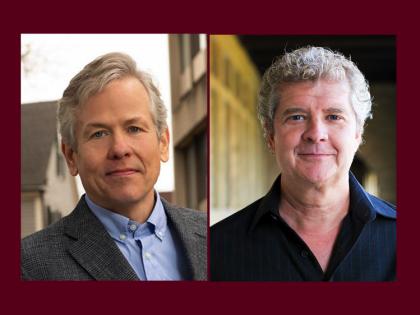Now that the 2008 presidential campaign has ended, it's time to begin pondering its lessons; Humanities Center scholar-in-residence Kiku Adatto offered a first take on Wednesday in a luncheon talk hosted by the Committee on the Concerns of Women at Harvard.
Adatto, a lecturer on social studies at Harvard and frequent commentator on American media and culture, finds cause for hope in the news coverage of the run-up to this year's election: journalists, she said, have begun paying more attention to the substance of candidates' speeches and platforms, and less attention to window dressing such as candidates' hair, clothing, and body language.
Television revolutionized campaign coverage, she reminded her audience, starting in 1960 with the Nixon-Kennedy debate (in which everyone who watched the debate on TV thought Kennedy won, and those who listened to the radio thought Nixon won). With his 1980 and 1984 campaigns, actor-president Ronald Reagan embraced the medium and used photo opportunities so deftly that it "made watching the network evening news like going to the movies," Adatto said. She considers the 1988 Bush-Dukakis campaign the zenith of a media obsession with image (fun fact: the average TV news sound bite in 1968 ran 42.3 seconds; by 1988 it was 9.8 seconds). But as recently as last year's campaign for the Democratic primary, many Americans knew more about John Edwards's haircut than his policy proposals.
During the general-election campaign, however, Adatto noticed the media reporting more about what the candidates said and how they phrased it. "Words," she said, "have made a comeback."
Considering her audience on Wednesday, she addressed images of women in the 2008 campaign. She said she found public discourse, and especially humor, about Hillary Clinton and Sarah Palin especially telling. Palin was considered attractive but not intelligent (or at least not well-informed); in Clinton's case, Adatto said, "all the jokes were about Bill and Hillary not sleeping together."
Adatto spoke nostalgically of American cinema of the 1930s and 40s, when actresses such as Katharine Hepburn, Bette Davis, and Rosalind Russell played women who "were glamorous and beautiful and professional and they could stand up to men." Perversely, as women have gained more rights, power, and freedoms, the image of the "complete" woman has disappeared from the media; now, she said, there seems to be a necessary choice between being viewed as smart and capable and being viewed as attractive.
One more thing that became apparent in the most recent campaign: everyone is a journalist now. The age of blogs and cell-phone cameras does not reward particularly skilled journalists, such as master interviewers or gifted video editors. Rather, those who reach the widest audience are those who are in the right place at the right time and have the presence of mind to pull out a camera.
Adatto mentioned photos from Abu Ghraib (taken by a U.S. soldier and not meant for public consumption) and cell-phone video of Saddam Hussein's execution (riveting because Saddam could be heard trading insults with onlookers in the last moments of his life). John McCain's "Bomb bomb bomb, bomb bomb Iran" moment is surely also an example. McCain parodied the Beach Boys tune "Barbara Ann" in a speech before a veterans' group in South Carolina in April 2007; a listener promptly uploaded a cell-phone video to YouTube, and the moment came back to haunt McCain during the presidential debates.
Adatto—who this year released an updated version of her 1993 book Picture Perfect: The Art and Artifice of Public Image Making (new title: Picture Perfect: Life in the Age of the Photo Op)—has also been director of children's studies at Harvard; a research fellow and faculty member at the Harvard Kennedy School; and a member of the faculty in the department of sociology.
Harvard Magazine has previously written about Adatto's work with images of children and analyses of what those images suggest about our conceptions of childhood; read that article here.







